Smart fingerprint lock technology
Fingerprint refers to uneven lines on the frontal skin of the fingertips. These lines are different in patterns, breakpoints, and intersections. They are called “features†in information processing. Medically, these characteristics have been proved for each of them. Fingers are different, and these characteristics are unique and permanent. Therefore, the above features of fingerprints become the most important evidence for identifying identity and are widely used in public security criminal investigation and judicial areas.
Configuration structure
The core components of the fingerprint lock: motherboard, clutch, fingerprint collector, cryptography, microprocessor (CPU), and intelligent emergency key. As a fingerprint lock, the most important should be the algorithm chip, that is, the heart is better, your mechanical part to do well, if the recognition is higher, whoever's fingerprint can open, then what is the use?
Second, no matter what lock, its essence is still a mechanical product. Fingerprint lock is a model of using modern high-tech to transform traditional industries. Its core technology is firstly the grasp of mechanical technology. Mechanical technology mainly consists of the following five aspects:
1. The rational design of the front and rear panels, that is, the appearance, is a sign that is significantly different from similar products. The more important internal structure layout directly determines the stability and function of the product. This process involves design, mold making, and surface treatment. Therefore, the more style manufacturers, relatively speaking, more development and design capabilities, better stability.
2, lock body. That is, the mother tongue of the lock tongue that can be associated with the door. The quality of the lock body directly determines the life of the product. This is the most core technology in mechanical technology and the lifeblood of fingerprint locks. It is also the most difficult problem to solve in the industry. 95% of the existing production units can not solve this problem, mainly through the way of outsourcing. Strong manufacturers own their own ability to design and develop locks. Therefore, the lock body is a core component that truly embodies the technical level of the manufacturer and is the core technology of the entire fingerprint lock.
3, motor. The motor is a driver. Just like the computer's driver software. It is the connecting device of electronics and machinery. It is the transforming center of power and plays a major role in the connection. If the motor stops working or an obstacle, the lock will automatically open and cannot be locked.
4, fingerprint module and application system. This is the basis of the electronic part. Fingerprint module, peer function is almost the same, mainly to see the chip and algorithm.
LCD screen
The liquid crystal display is more convenient and simple to operate, making the fingerprint lock more intelligent. The configuration of liquid crystal is not a simple accumulation of materials, but also relates to the rational design of software and circuit systems. In general, the use of this technology is like the fingerprint lock itself instead of a mechanical lock, it is the inevitable development of technology and market!
chip
At present, China has successfully developed a DSP fingerprint lock professional processing chip, domestic manufacturers to burn algorithm software; the vast majority of fingerprint lock manufacturers use domestic fingerprint algorithm chip.
sensor
Fingerprint sensors are mainly optical sensors and semiconductor sensors.
Fingerprint module
Basic Features
Safety
Fingerprint locks are safety products produced through the precise combination of electronic components and mechanical components. The essence of fingerprint lock is nothing more than security, convenience and fashion. The refusal rate and false-rejection rate are undoubtedly one of the most important indicators. They can also be called rejection rate and misrecognition rate. There are currently several ways to express:
(1) The resolution of the fingerprint head used, such as 500 DPI.
The accuracy of the existing optical fingerprint sensor is generally 300,000 pixels, and some companies use 100,000 pixels.
(2) Percentage: such as written on some parameters.
Of course, this is a parameter for each company's promotion. Whether it is the 500 DPI or the rejection rate, "0.1% is just a concept for the average user, and there is no way to detect it.
(3) The statement that the “rejection rate and falsehood rate†are mutually shifting is correct to a certain extent. This seems to be the concept of “hypothesis testing†in mathematics: on the same level, The true rate is high, the false rate is low, and vice versa. This is an inverse relationship. However, why is it correct to a certain extent, because if the level of technology and technology is improved, both of these indicators can be lowered, so it is essential to improve the technical level. Some manufacturers in order to speed up certification, by reducing the level of safety practices, at the expense of safety, to create fast, strong identification of the illusion. This is more often found in sample locks or demo locks.
(4) According to the relevant standards, the security level of fingerprint security locks for family entrance doors should be 3, that is, the rejection rate is ≤ 0.1%, and the false acceptance rate is ≤ 0.001%.
durable
1. In theory, one more function is more than one program, so the possibility of product damage is even greater. However, this is a comparison between manufacturers with the same technical strength. If the technical strength is high, then the completion of their products can achieve more features and better quality than those with poor technical capabilities.
2. The more crucial point is: the comparison between the benefits of multiple functions and the risks brought by the functions. If the benefits brought by the function are great, then it can be said that this increase is worthwhile. Just as you drive a speed limit of 100 yards, you need not pay the penalty or the cost of a car accident for the same reason. If this feature does not bring you any benefits, then this feature is redundant. So the key is not to think about "more than one function is more of a risk" but the value of this risk is not worth bearing.
3. Just like the networking function, on the one hand, the stability of fingerprints in the network transmission process is still not certain. On the other hand, to destroy existing decoration, and more importantly, once it is invaded by viruses, there will be no “medicine†to cure it. . Once access to the network, the possibility of being attacked will greatly increase. For security technologies such as telephone alarms, relevant equipment must be set separately, and there is a problem of indoor radiation and false alarms. Especially the latter, due to external factors such as technology and environment other than fingerprint lock itself
Anti-theft
1. According to the division of anti-theft performance, popular fingerprint locks are divided into two categories: ordinary fingerprint locks and anti-theft fingerprint locks.
Ordinary fingerprint lock, and the original electronic lock is not much difference, mainly to use fingerprint authentication, but not used in existing domestic security doors, such fingerprint locks without world hooks, can not use the security door world security system (on the market Some imported fingerprint locks do not meet national industry standards and can only be used for wooden doors.
Fingerprint anti-theft lock, better security, can apply to standard security doors and wooden doors. This kind of lock can automatically or semi-automatically connect the security door with the world lock system, without affecting the performance of the original security door.
2. Different anti-theft performance, market prices are also very different. The price of fingerprint locks with mechanical anti-theft function is obviously higher than ordinary fingerprint locks without anti-theft function. Therefore, when purchasing a fingerprint lock, first select the corresponding lock according to the door.
3. The use of the family should use anti-theft fingerprint lock, so that the lower the requirements of the door, without modification, after-sale maintenance is convenient. The fingerprint lock of the project is generally purchased in batches and can require the door factory to provide the matching door that meets the product installation in the same orientation. The most direct way to distinguish the fingerprint lock from the engineering fingerprint lock or the home fingerprint lock is to check whether the length and width of the rectangular lock bar (guide plate) under the lock of the door cabinet is 24×240mm (mainly a specification), and a few are 24×260mm. 24X280mm, 30X240mm, the distance from the center of the handle to the door is generally around 60mm.
The main function
Fingerprint lock function: Fingerprint open, password open, card open, emergency key open, now also increase the way to open the phone remotely, allowing consumers to trust more and choose the fingerprint lock. The main function of the fingerprint lock is security and convenience. In addition to the door opening function, the fingerprint function is generally added, deleted, and cleared. The high-performance fingerprint lock is also equipped with a human-machine dialogue system such as an LCD touch screen, which has a high level of intelligence, is relatively easy to operate, and provides operation guidance and query usage records. And built-in parameters, setting status and other functions. Fingerprint management functions include: adding fingerprints, deleting fingerprints, clearing fingerprints, and setting system parameters.
Power supply
Fingerprint lock power supply is generally divided into two types, one using 4 AA alkaline batteries, generally can be used for about one year; one is to use two sets of circuit systems, two sets of 4 AA batteries, a fingerprint circuit, Password set of circuits, generally about a year and a half. (The specific visual function, power consumption design, number of uses vary, etc.). According to the industry standard production anti-theft fingerprint lock, should be equipped with an emergency power supply interface, available 9V stacked battery external power supply.
Attachment 1: cylinder
At present, the level of cylinders on the market is roughly classified into A, B, Super B, C, Super C, D, and so on. Their origins date back to 1994 when the state promulgated "GA/T73-94" mechanical anti-theft lock standards, which specify the A-class locks and B-class locks, the main constraint is A-level locks to prevent technical unlocking need more than 1 minute, Class B The lock anti-lock technology needs more than 5 minutes to unlock. In other words, according to national standards, there are currently only two types of locks on the market, Class A and Class B. The main difference between them is the timing of the prevention of technology, not the style.
Super B grade, C grade, Super C grade, D grade, etc., are the enterprise standard grades set by the lock makers themselves. They seem to be higher than the national standards of A grades and B grades. However, they are actually a type of behavior that the company has set itself. Each company's level of standards may not be the same, so there will be today's market status of the chaos core level.
The first single-row marble lock is commonly known as A-level lock
This kind of lock uses a marble structure, usually 7 marbles, so there are about 7 different shades of dots on the key, these dots are developed from the sawtooth of the original sawtooth structure, and the structure is very simple. You can use the unlocking hook direct technology to open, or the tin paper unlocking tool opens quickly.
The second double-row marble lock is commonly known as Class B
This type B lock cylinder is based on the A-level to increase the number of marbles to achieve double-row, the principle and A-level approximation, but due to the increase in the amount of marbles, technology unlocking will be more difficult, open the use of time It will be longer. The latest tin foil unlocking tool has developed a separate mold for this type of lock, enabling quick unlocking, and the keystroke gun can also open the lock without damage. The technical unlocking time is more than 5 minutes and belongs to Class B lock in the national standard.
The third double row + leaf is commonly known as Super B
This type of lock is based on the B-level plus a blade slot, which greatly enhances the safety of the original marble structure, but it is relatively easy to fail due to its complexity. Its biggest bright spot is the use of blade structures for civilian locks for the first time. Of course, the disadvantage is that the blade structure is too weak and too weak.
The fourth leaf lock commonly known as C level
All-leaf structure, full slot key is the blade lock.
The fifth other commonly known as C+ or higher
The anti-theft function is added on the basis of the blade lock. There are blade steel cylinders with added steel beams and all stainless steel blades. This design is designed to prevent violent interruption of the design. Although the C-stage blade lock is technically more powerful, it is no different from the common cylinder in terms of violence resistance.
Secondly, there is a lock cylinder with a idling function, which can resist the violent destruction of electric drills and enhance the ability to prevent them from opening. It is currently the top technology.
Appendix 2: Fingerprint Identification Technology
At present, there are mainly four types of fingerprint image acquisition technologies used in the market: optical scanning devices, temperature-sensitive inductive fingerprint sensors, semiconductor fingerprint sensors, and ultrasonic fingerprint scanning.
First, optical identification technology
Fingerprinting with optical technology is the oldest and most widely used technology. Place your finger on the optical lens. Under the illumination of the built-in light source, use a prism to project it on a charge-coupled device (CCD) to form a ridge (a line with a certain width and orientation in the fingerprint image). The lines (recesses between the lines) are white, digitized, multi-gray fingerprint images that can be processed by the fingerprinting device algorithm.
The optical fingerprint acquisition technology has obvious advantages: it has been tested for a long time, adapts to a certain degree of temperature variation, can reach a higher resolution of 500 DPI, etc., most of which is low in price. There are also obvious disadvantages: Due to the requirement of a sufficiently long optical path, a sufficiently large size is required, and over-drying and excessively greasy fingers will also deteriorate the effect of the optical fingerprint product.
The limitations of optical fingerprint sensing are reflected in potential fingerprints (potential fingerprints are left after the finger is pressed on the platen), which not only reduces the quality of the fingerprint image, but also can cause the two fingerprints to overlap in severe cases. Obviously, it is difficult to satisfy. Practical application needs. In addition, the platen coating and the CCD array will wear out over time, which may result in a decrease in the quality of the acquired fingerprint image. However, there are disadvantages such as inability to perform live fingerprint identification and poor applicability to wet and dry fingers.
Optical fingerprinting systems can only scan the surface of the skin of a finger or scan to the layer of dead skin because light does not penetrate the surface of the skin (dead skin layer), but cannot penetrate deep into the dermis. In this case, the cleanness of the finger surface directly affects the recognition effect. If there is more dust on the user's finger, an identification error may occur. Also, if a fingerprint is used as a fingerprint model by a person, it may also pass through a recognition system, which is not very safe and stable for the user.
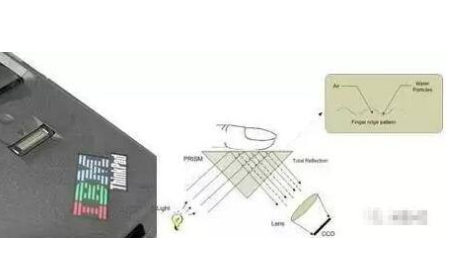
Second, temperature difference sensor identification technology
The temperature-sensitive inductive recognition technology is based on the principle of temperature sensing. Each pixel is equivalent to a miniaturized charge sensor, which is used to sense the temperature difference between a finger and a chip image area to generate a representative image information. The electrical signal.
Its advantage is that the fingerprint image can be acquired within 0.1s, and the sensor has the smallest volume and area. This is commonly referred to as a sliding fingerprint reader. Disadvantages are: subject to temperature limitations, over time, fingers and chips are at the same temperature.
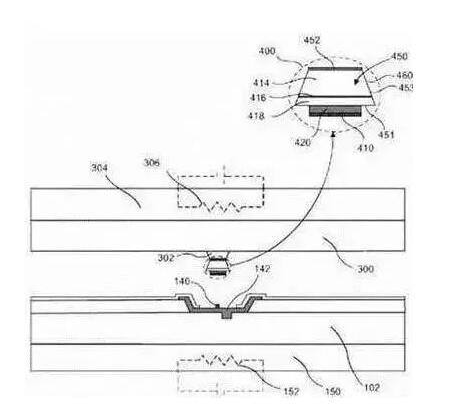
Third, semiconductor silicon technology (capacitive identification technology)
In the late 1990s, the technology based on the semiconductor silicon capacitive effect tended to mature. The silicon sensor becomes a plate of the capacitor, and the finger is the other plate. An 8-bit gray scale image is formed using the difference between the capacitance of the fingerprint lines of the handprint and the smooth silicon sensor.
The capacitive sensor emits an electronic signal, which passes through the surface of the finger and the layer of dead skin, and reaches the living body layer (dermis layer) of the skin of the finger, and directly reads the fingerprint pattern. Due to the depth of the dermis, the sensor can capture more real data, is less susceptible to dust on the surface of the finger, improves the accuracy of identification, and effectively prevents identification errors. Semiconductor fingerprint sensors include semiconductor pressure sensors, semiconductor temperature sensors, etc. Among them, the most widely used is a semiconductor capacitive fingerprint sensor.
The semiconductor capacitance sensor determines whether or not the position is what, according to the difference in the capacitance values ​​formed by the fingerprint's enthalpy and enthalpy and the semiconductor capacitive sensing particles. Its working process is pre-charged to a certain reference voltage by capacitive sensing particles on each pixel.
When a finger touches the semiconductor capacitor fingerprint, since the 嵴 is a bump and the 峪 is a recess, depending on the relationship between the capacitance and the distance, different capacitance values ​​will be formed at the 嵴 and 峪 points. Then discharge is performed using the discharge current. Because 嵴 and 峪 correspond to different capacitance values, their discharge speed is also different.
The squat pixel (high capacitance) discharges slowly and the squat pixel (low capacitance) discharges faster. According to the difference in the discharge rate, the positions of the helium and the cesium can be detected, thereby forming the fingerprint image data.
Unlike optical devices, which use manual adjustment to improve image quality, capacitive sensors use automatic control techniques to adjust the sensitivity of the fingerprint image pixels and the local area of ​​the fingerprint, and combine feedback information to generate high-quality images in different environments. Due to the local adjustment capability, even poor contrast images (such as areas where the finger is pressed lightly) can be effectively detected and the sensitivity can be increased for these pixels at the moment of capturing to generate high quality fingerprint images.
The advantage of the semiconductor capacitor fingerprint sensor is that the image quality is good, generally no distortion, small size, and easy integration in various devices. The electronic signal emitted from the finger will pass through the surface of the finger and the layer of dead skin to reach the living layer (dermis layer) of the skin of the finger and directly read the fingerprint pattern, thereby greatly improving the safety of the system.
The most important advantage of semiconductor silicon sensing technology is its ability to achieve biometric fingerprinting. Better image quality than optical technology can also be achieved on smaller surfaces, achieving 200-300 line resolution on a 1cm & TImes; 1.5cm surface (smaller surfaces also result in lower cost and can be integrated into more Small device). Small size, low cost, high imaging accuracy, and low power consumption, it is very suitable for use in security and high-end consumer electronics products, known as the second generation of optical fingerprint identification technology.
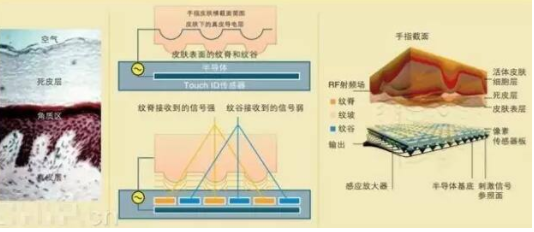
Fourth, ultrasonic identification technology
Ultrasonic fingerprinting is a new type of technology. The principle is to use ultrasonic waves to penetrate the material and produce echoes of different sizes depending on the material. When ultrasonic waves reach different materials, they are absorbed, penetrated and reflected to different extents. ). Therefore, by using the difference in acoustic impedance between the skin and the air, it is possible to distinguish between the positions of the fingerprint and the ankle.
Ultrasonic technology uses an ultrasonic frequency of 1 & TImes; 104 Hz - 1 & TImes; 109 Hz, and the energy is controlled to the extent that it is harmless to the human body (the same intensity as medical diagnosis). Ultrasound technology products can achieve the best accuracy, it requires less cleanliness of the fingers and the plane, but its acquisition time will be significantly longer than the aforementioned two types of products, and the price is expensive, and it can not be done in vivo fingerprint recognition, so at present Use sparsely.
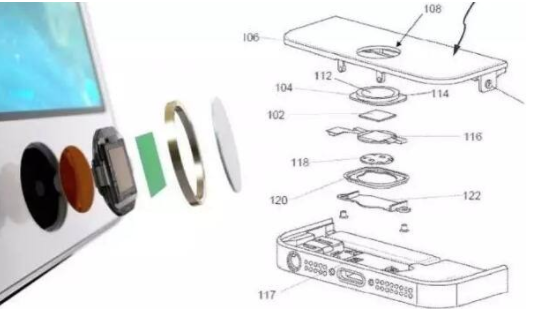
Micro-optical fingerprint recognition technology
No matter what the current mainstream - capacitive fingerprint sensor, or rookie - ultrasonic fingerprint sensor, need an additional fingerprint sensor, but the former need to open the hole in the screen, the latter can be hidden under the screen only.
In 2017, Apple Inc. and Huiding Technology Co., Ltd. introduced a fingerprint identification technology based on micro-optical sensing technology. This technology cleverly integrates the display screen and the fingerprint sensor to support fingerprint recognition across multiple screens.
The working principle of the fingerprint recognition sensor "began" in optical type, "full" in capacitive type, and "continuously" in ultrasonic type and miniature optical type. In a circle, it is now back to optical sensing. The difference is that the advanced nature of today's micro-optical sensing technology is enough to trigger the full "face" innovation of smart phones. What is the principle of a miniature optical fingerprint sensor? There are differences between Huiding Technology and Apple's technology. Huiding Technology has not revealed the details yet, but we can learn about Apple's MicroLED technology.
Until 2012, MicroLED technology still stays in the lab development stage. With Apple's acquisition of LuxVue Inc., which has a number of patented MicroLED technologies, in May 2014, the market's attention to this technology has reached an unprecedented height. MicroLED technology, namely LED microfabrication and matrix technology. Refers to an array of high-density, tiny-sized LEDs integrated on a single chip. Each pixel of the display can be addressed and driven individually to light up, reducing pixel distances from millimeters to micrometers.
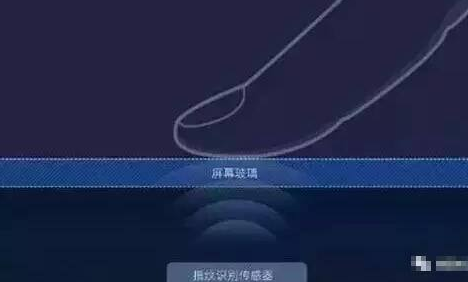
MicroLED display is to make the LED structure design thin film, miniaturization, array, its size is only about 1 ~ 10μm grade, and then MicroLED batch transfer to the circuit substrate, the substrate can be hard, soft and transparent, On the opaque substrate, the protective layer and the upper electrode are completed by a physical deposition process, and the upper substrate can be packaged to complete a simple structure of a MicroLED display.
According to U.S. Patent and Trademark Office's publication of Apple Inc. U.S. Patent No. 957,0002 "Integrated Infrared Diode Interactive Display Panel" on February 14, 2017, a touch display screen using MicroLED sensing technology and how it implements fingerprint identification are shown Technical function.
Specifically, a separate infrared emitting tube is connected to the sensing diode as a driver, and a selection circuit is used to create a sub-pixel circuit. Due to their small size, these infrared diodes can be embedded in the display substrate with RGB LEDs, or mounted on the microchip and then integrated into the substrate.
In fingerprinting operations, there are integrated interactive pixels (so-called “interactive pixelsâ€) that can integrate red, green, blue, infrared LEDs, infrared detectors, and other color arrays at very high resolutions. A certain area or a few lines of the screen of the panel) scans the user's fingerprint information.
When this distance reaches a sufficient distance to be sensed, a bitmap will be generated and the system will be informed of the approximate positioning data. In some cases, the bitmap includes incident light intensity information, allowing deep analysis of the object and its surface. For example, by examining the dark and bright spots of the bitmap, the sample system can detect the corresponding ridges and folds in the user's fingerprint. In order to achieve the function of fingerprint recognition.
Fingerprint identification technology is the mainstream technology of biometric identification technology, and it is the mainstream technology of identity authentication. It has been widely used in all walks of life. Fingerprint-enabled devices must have a physical key that allows you to scan a fingerprint, but with the development of touch and display chips, highly integrated, the future development trend is anywhere, we can complete the fingerprint recognition on the screen. . Embedded fingerprint recognition appears in the core, so any restrictions do not affect the device manufacturer's industrial design of the device. As the integration of fingerprint recognition and touch display technology becomes more and more mature, it will also become more and more extensive. For example, quick payment, identification, personalized preference customization, etc., it is very likely that passwords will be replaced by fingerprint recognition technology.
Dongguan Deli Plastic Co.,Ltd is a manufacturer specialized in the research, development ,plastic injection mould and making mass production with well-equipped facilities and strong technical force.
Our products are extensively used in household industry/electronic industry/automobile industry/building industry and other industries.
We have rich experience on one-stop solution, provide various services from new product design,prototype,mold making,mass production,assembly and logistics. The most important advantage is we have our own R&D team to help clients to turn ideas into actual parts. All of these engineers and designers have over 15 years experience in these plastic products fields.
We have a strict quality control system, an excellent management team and also a dedicated sales force, enable us to fulfill our commitment in high quality products and outstanding services.
If you are looking for a trustworthy supplier of customized items, please do not hesitate to contact us. We are always striving to establish a win-win partnership with customers from all over the world and help our partners to stay one step in front of your competitors.
usb mini Fan,usb rechagerable Fan,usb portable Fan
Dongguan Yuhua Electronic Plastic Technology Co.,Ltd , https://www.yuhuaportablefan.com